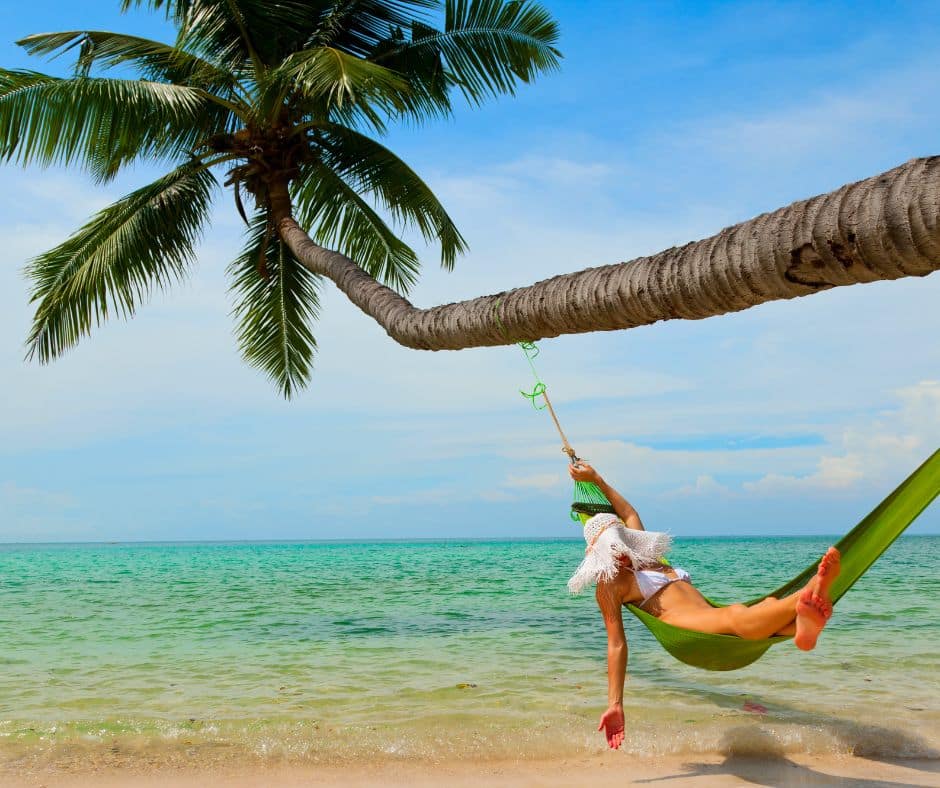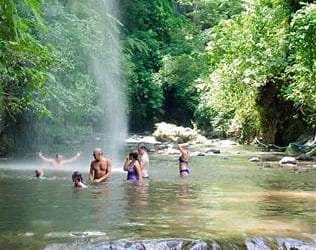So you think surf life in Costa Rica is all bronzed bodies and mojitos at sunset?
Bless your Instagram-fed heart. The truth is far more entertaining—and sunburned. The real surf lifestyle here isn’t curated; it’s chaotic, crusty, and constantly covered in sand. It involves duct-taped flip-flops, coconuts opened with machetes that really shouldn’t be in amateur hands, and hammocks doubling as both beds and laundry racks. If you’re looking for a glamorous surf retreat, keep scrolling. But if you want to know what it’s like to live with saltwater in your ears, geckos in your backpack, and a deep existential bond with your surfboard—welcome, friend.
What is the real surf lifestyle like in Costa Rica?
The real surf lifestyle in Costa Rica is equal parts waves, sunburn, flip-flop blowouts, and a deep, almost spiritual love of simplicity.
While the Instagram version might showcase perfect waves and bronzed six-packs, the day-to-day surf life involves sun-bleached laundry flapping in the breeze, cheap casados, and arguing over who stole the last wax bar. Long-term surfers here live for the swell, eat like kings on a backpacker’s budget, and treat showers as optional—unless there’s a date involved or a really aggressive parrotfish encounter.
Where do surfers live in Costa Rica?
Surfers in Costa Rica live anywhere from hammocks to hostels to the occasional “luxury shack” with no door but a killer ocean view.
Popular setups include:
- Beachfront cabinas with more geckos than furniture
- Shared rentals with other wave chasers (aka who snores loudest wins the couch)
- Hammocks strung between palm trees—budget-friendly and mosquito-approved
- Vans turned into mobile surf kingdoms with boards on top and instant noodles inside
The closer to the break, the higher the rent—and the more likely you are to wake up to someone waxing their board next to your pillow.
What do surfers eat and drink in Costa Rica?
Surfers in Costa Rica feast on a glorious mix of local food, tropical fruit, and whatever’s cheap and filling enough to fuel hours in the water.
Top picks include:
- Casados: rice, beans, salad, meat, and plantains (a surfer’s five food groups)
- Empanadas: because everything’s better in dough
- Watermelon smoothies, coconut water, and Imperial beer
- Coffee so strong it could paddle out on its own
There was once a man in Santa Teresa who lived exclusively off bananas and gallo pinto for six months. He swore it made his turns sharper. It probably just gave him potassium-induced superpowers—or hallucinations. Either way, legend says he once surfed a wave for three straight minutes and then fell asleep in the lineup.
How do surfers spend their nights in Costa Rica?
Evenings are for hammock wisdom, questionable guitar playing, and debates about which reef break is secretly haunted.
Surfer nightlife is a mix of:
- Watching surf edits projected on hostel walls
- Swapping stories that grow more heroic with each Imperial
- Repairing dings with duct tape and blind optimism
- Getting hilariously sunburned in creative patterns
- Falling asleep under mosquito nets while someone’s dog steals your flip-flops
And yes, some go full moonlit beach bonfire, complete with howling at stars and someone attempting fire poi (badly).
Is the surf community in Costa Rica friendly?
Absolutely. The surf community is a welcoming, sandy-footed tribe where your board size matters less than your stoke level.
Expect:
- Locals shouting “¡Vamos!” as you paddle for a wave
- Instant friendships over fin keys and sunscreen
- The unofficial surf swap economy (wax for mangoes is a legit trade)
- Hilarious misunderstandings in Spanglish that always end with laughter
There’s even a guy in Pavones who gives surf advice in exchange for bananas. No joke.
Why do surfers stay long-term in Costa Rica?
Surfers stay in Costa Rica for the endless summer vibes, affordable lifestyle, and the sense that time here flows like a slow, lazy left-hander.
Reasons surfers don’t leave:
- Waves for all levels, all year
- Pura Vida mindset is contagious
- You can live comfortably with little
- Nature is always just outside your door
- Surfboards are practically a form of ID
Many arrive for a two-week surf trip and, five years later, are still “just passing through.”
FAQs About the Surf Lifestyle in Costa Rica
Q: Do I need a car to surf Costa Rica?
A: Not necessarily. If you’re in Tamarindo, Jacó, or Santa Teresa, you can walk or hitch a ride in a beat-up 4×4 with half the town inside.
Q: Is it safe to surf solo?
A: Mostly, yes—just know your limits, check the tides, and maybe don’t paddle out if even the pelicans are turning back.
Q: What’s a “Tico shower”?
A: A cold shower powered by ambition and hope. Some say it builds character. Others just scream.
Q: How do I make surf friends fast?
A: Smile, share wax, and say “nice wave” like you mean it. Bonus points if you can open a coconut without losing a finger.
So, what’s the final word on Costa Rica’s surf lifestyle?
It’s gritty, it’s hilarious, it’s raw—and it’s real. You won’t always catch the perfect wave, and sometimes your hammock will collapse mid-nap, but you’ll wake up every day a little saltier, a little sandier, and a whole lot freer. Whether you’re here for the swell or the stories, Costa Rica’s surf life will wax your soul, ding your expectations, and leave you sunburnt and smiling. And if all else fails, at least the monkeys are good listeners.






